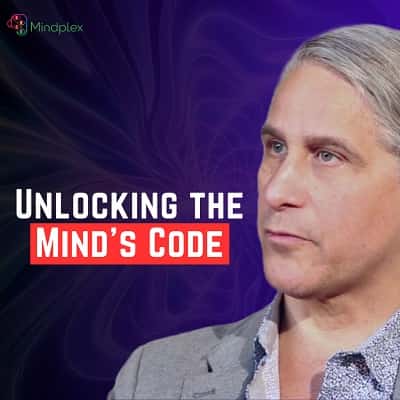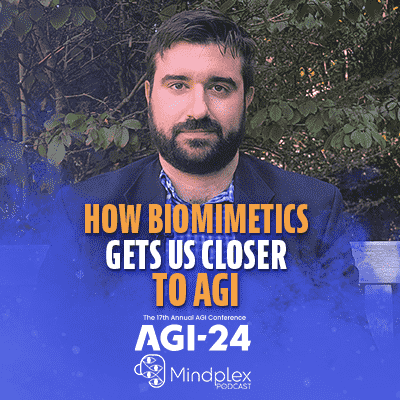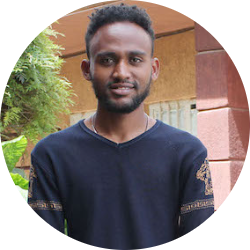A New Approach to Formalizing Second-Order Languages in Agda
Jul. 22, 2024.
7 mins. read.
29 Interactions
Recent advancements in programming language frameworks unveil a systematic approach for generating Agda implementations of second-order languages. This innovation promises reduced errors and enhanced verification efficiency in complex language systems.
RELATED ARTICLES
Introduction
In the realm of programming languages and formal methods, the representation and manipulation of syntax, particularly for languages with complex variable binding structures, is a significant challenge. Traditional methods often involve cumbersome and error-prone techniques, such as manually handling variable binding and substitution. However, recent advancements have introduced more robust and systematic approaches. One such advancement is presented in a recent study, which outlines a framework for automatically generating Agda implementations of second-order languages. This article explores the main concepts of this framework, its foundations, and its implications for the field.
Understanding the Framework
At its core, the framework allows users to produce implementations of second-order languages in Agda with minimal manual effort. The generated term language is explicitly represented as an inductive, intrinsically-encoded data type. This means that the structure and rules of the language are built directly into the data type definitions, ensuring that terms are always well-formed according to the language’s syntax and semantics.
This intrinsic encoding offers several advantages over traditional approaches. By embedding the rules directly into the data type definitions, the framework ensures that any term constructed is guaranteed to be syntactically correct. This reduces the likelihood of errors and simplifies the reasoning about programs and their properties.
The framework supports various formalised metatheoretical constructs, such as substitution for operational semantics and compositional interpretations for denotational semantics. These constructs are essential for defining how the language behaves and how terms can be transformed and interpreted. For example, substitution is crucial for operational semantics, defining how variables in a program can be replaced with their corresponding values. Compositional interpretations, on the other hand, are key for denotational semantics, allowing for a systematic interpretation of programs in a mathematical domain.
Mathematical Foundations
The framework’s strength lies in its deep mathematical foundations, specifically derived from the theory of abstract syntax. Traditional approaches often require ad-hoc definitions and lemmas to handle variable binding and substitution, leading to complex and error-prone implementations. In contrast, the presented framework leverages a systematic mathematical approach, avoiding these pitfalls.
One significant mathematical tool used in this framework is the presheaf model. This model provides a structured way to handle variable binding by treating contexts (environments in which variables exist) as functors. This approach allows for a more elegant and powerful handling of variable scopes and substitutions, which are crucial for both the correctness and usability of the language representations.
Presheaves provide a categorical framework that simplifies many of the complexities associated with variable binding. They allow for the definition of substitution and other operations in a way that is both mathematically rigorous and practically useful. By treating contexts as functors, the framework can systematically handle variable scopes and avoid common pitfalls such as variable capture and name clashes.
Related Work and Comparisons
The challenge of formalising and reasoning about abstract syntax has a rich history, motivated largely by the development of proof assistants. The Barendregt variable convention, which suggests renaming variables to avoid clashes, is notoriously difficult to formalise. Several approaches have been developed to tackle this issue, including higher-order abstract syntax, locally nameless representation, and intrinsically-typed encoding.
Higher-order abstract syntax, introduced by Pfenning and Elliot, represents variables and bindings using the meta-language’s own functions and variables. This approach simplifies many aspects of the implementation but can be less efficient for certain operations. For example, while higher-order abstract syntax can make it easier to define certain operations, it can also introduce inefficiencies when manipulating large terms or performing complex substitutions.
Locally nameless representation, as explored by Bird and Paterson, uses a hybrid approach, combining named and nameless (de Bruijn indices) representations to balance ease of use and efficiency. This approach allows for more efficient manipulation of terms while still providing a systematic way to handle variable binding. However, it can still be prone to errors and require complex arithmetic operations.
Intrinsically-typed encoding, as employed in the discussed framework, ensures that terms are always well-typed by construction. This method avoids many of the pitfalls of other approaches, such as the complicated arithmetic involved in de Bruijn indices. By embedding the typing rules directly into the data type definitions, intrinsically-typed encoding provides strong guarantees about the correctness of terms and simplifies the reasoning about programs.
Advantages of the Presented Framework
The framework’s approach to intrinsically-typed representation offers several advantages. First, it provides strong static guarantees about the typing and scoping of terms, reducing the risk of errors. This is particularly valuable in dependently-typed proof assistants like Agda, where correctness proofs are central. By ensuring that terms are always well-typed, the framework simplifies the development and verification of programs and reduces the likelihood of errors.
Moreover, the framework includes a code-generation script that facilitates rapid prototyping and experimentation. This script allows users to quickly generate and test new language features or modifications, significantly speeding up the development process. For example, a researcher can easily define a new language construct, generate the corresponding Agda implementation, and immediately begin experimenting with its properties and behaviour.
Another noteworthy feature is the framework’s ability to incorporate generic traversals and equational logic through parameterized meta variables. This capability simplifies the manipulation and reasoning about terms, making it easier to develop complex language features and proofs. For example, the framework can automatically generate code for performing common operations, such as substitution or evaluation, and provide systematic ways to reason about their correctness.
Case Studies and Benchmarks
The framework was evaluated using the PoplMaRK challenge, a set of benchmarks for comparing metatheory formalisation efforts. Many existing approaches, particularly those using Coq, rely on numeric de Bruijn indices, which can be complex and error-prone. In contrast, the presented framework’s use of an intrinsically-typed, nameless representation proved more robust and easier to manage.
The PoplMaRK challenge includes a variety of tasks designed to test the capabilities of different formalisation frameworks. These tasks range from simple operations, such as substitution and evaluation, to more complex ones, such as proving properties about the language and its semantics. By demonstrating the framework’s ability to handle these tasks efficiently and correctly, the authors provided strong evidence of its robustness and utility.

Future Directions
The framework’s creators recognize that modern type theory encompasses a wide range of formal systems beyond second-order languages with algebraic types. Future work aims to extend the framework to handle these more complex systems, such as linear, dual-context, polymorphic, dependent, and polarised calculi. This expansion would further enhance the framework’s utility and applicability.
Additionally, ongoing work focuses on refining the categorical reformulation of the presheaf model to suit the practical needs of formalisation. This involves developing new notions and techniques to avoid quotienting, making the formalisation process more efficient and user-friendly. By addressing these challenges, the authors hope to further simplify the development and verification of complex language systems.
The framework’s flexibility and extensibility make it well-suited for a variety of applications. For example, it could be used to formalise and verify the semantics of new programming languages, develop tools for program analysis and optimization, or even explore new mathematical theories related to syntax and semantics. As the field continues to evolve, the framework’s capabilities will likely expand, enabling researchers to tackle increasingly complex problems.
Conclusion
The framework for generating Agda implementations of second-order languages represents a significant advancement in the field of programming languages and formal methods. By leveraging deep mathematical foundations and providing robust, systematic tools, this framework simplifies the development and verification of complex language systems. Its intrinsic typing guarantees, ease of extension, and support for rapid prototyping make it a valuable asset for researchers and developers alike.
As the field continues to evolve, the principles and techniques introduced by this framework will likely inspire further innovations, driving progress in the formalisation and implementation of increasingly sophisticated language systems. The future work outlined by the framework’s creators promises to expand its capabilities, addressing more complex and varied language constructs, and further solidifying its place as a cornerstone in the study of programming languages and formal methods.
In summary, this framework provides a powerful and flexible tool for the formalisation of second-order languages, offering significant improvements over traditional approaches. Its mathematical rigour, combined with practical tools for rapid development and experimentation, makes it an invaluable resource for both researchers and practitioners. As we look to the future, the framework’s potential for further development and application promises to drive continued progress in the field, opening up new possibilities for the study and implementation of programming languages.
Reference
Fiore, Marcelo, and Dmitrij Szamozvancev. “Formal Metatheory of Second-order Abstract Syntax.” Proceedings of the ACM on Programming Languages 6, no. POPL (January 12, 2022): 1–29. https://doi.org/10.1145/3498715.
Let us know your thoughts! Sign up for a Mindplex account now, join our Telegram, or follow us on Twitter.


.png)

.png)


.png)











11 Comments
11 thoughts on “A New Approach to Formalizing Second-Order Languages in Agda”
The potential for further advancements based on this work is exciting and could lead to even more sophisticated and reliable language systems.
🟨 😴 😡 ❌ 🤮 💩
Exploring the formalization of second-order languages in Agda offers a fascinating glimpse into the intersection of programming languages and formal logic. The use of Agda to explore second-order logic not only enhances the rigor of formal verification but also demonstrates the flexibility and power of dependently typed languages. It's intriguing to see how these advanced concepts can be systematically represented and manipulated, potentially paving the way for more robust software verification and proof development.
🟨 😴 😡 ❌ 🤮 💩
This framework for Agda implementations of second-order languages offers a groundbreaking approach to formal methods, enhancing efficiency and reducing errors. A significant step forward for programming language frameworks.
🟨 😴 😡 ❌ 🤮 💩
By leveraging deep mathematical foundations and intrinsic typing, the framework ensures robust and error-free syntax handling. Its support for rapid prototyping and systematic approaches to substitution and denotational semantics make it a valuable tool for researchers and developers. The framework's future potential to handle more complex systems and its practical applications in formalizing new programming languages are particularly promising. Excellent work!
🟨 😴 😡 ❌ 🤮 💩
This is a big step forward for managing complex programming languages. Exciting stuff!
🟨 😴 😡 ❌ 🤮 💩
The presented framework offers a promising approach to formalizing second-order languages within Agda. By leveraging intrinsically-typed encoding and presheaf models, the authors have developed a method that significantly reduces the potential for errors and increases efficiency compared to traditional techniques. The ability to generate Agda implementations with minimal manual intervention is a notable advantage.
🟨 😴 😡 ❌ 🤮 💩
This seems like a significant advancement in the field of programming language formalization. I'm excited to see how the framework progresses as the authors aim to extend it to handle even more complex formal systems beyond just second-order languages.
🟨 😴 😡 ❌ 🤮 💩
Great overview of the new framework for generating Agda implementations of second-order languages! The approach's focus on intrinsic encoding and leveraging deep mathematical foundations like the presheaf model is particularly intriguing. This ensures robust handling of variable binding and substitution, which are often challenging aspects of language implementation. It's exciting to see how this framework can streamline the development process, providing strong guarantees about term correctness and enabling rapid prototyping. The potential extensions to more complex systems promise even broader applicability and utility in the future. Kudos to the team for this significant contribution to the field!
🟨 😴 😡 ❌ 🤮 💩
Explained in great detail
🟨 😴 😡 ❌ 🤮 💩
Very informative article
🟨 😴 😡 ❌ 🤮 💩
Exploring a new approach to formalizing second-order languages in Agda, this piece is perfect for those interested in formal methods and programming languages. The clear explanations and examples simplify complex concepts, making it a valuable read for anyone wanting to deepen their understanding of Agda and language formalization.
🟨 😴 😡 ❌ 🤮 💩